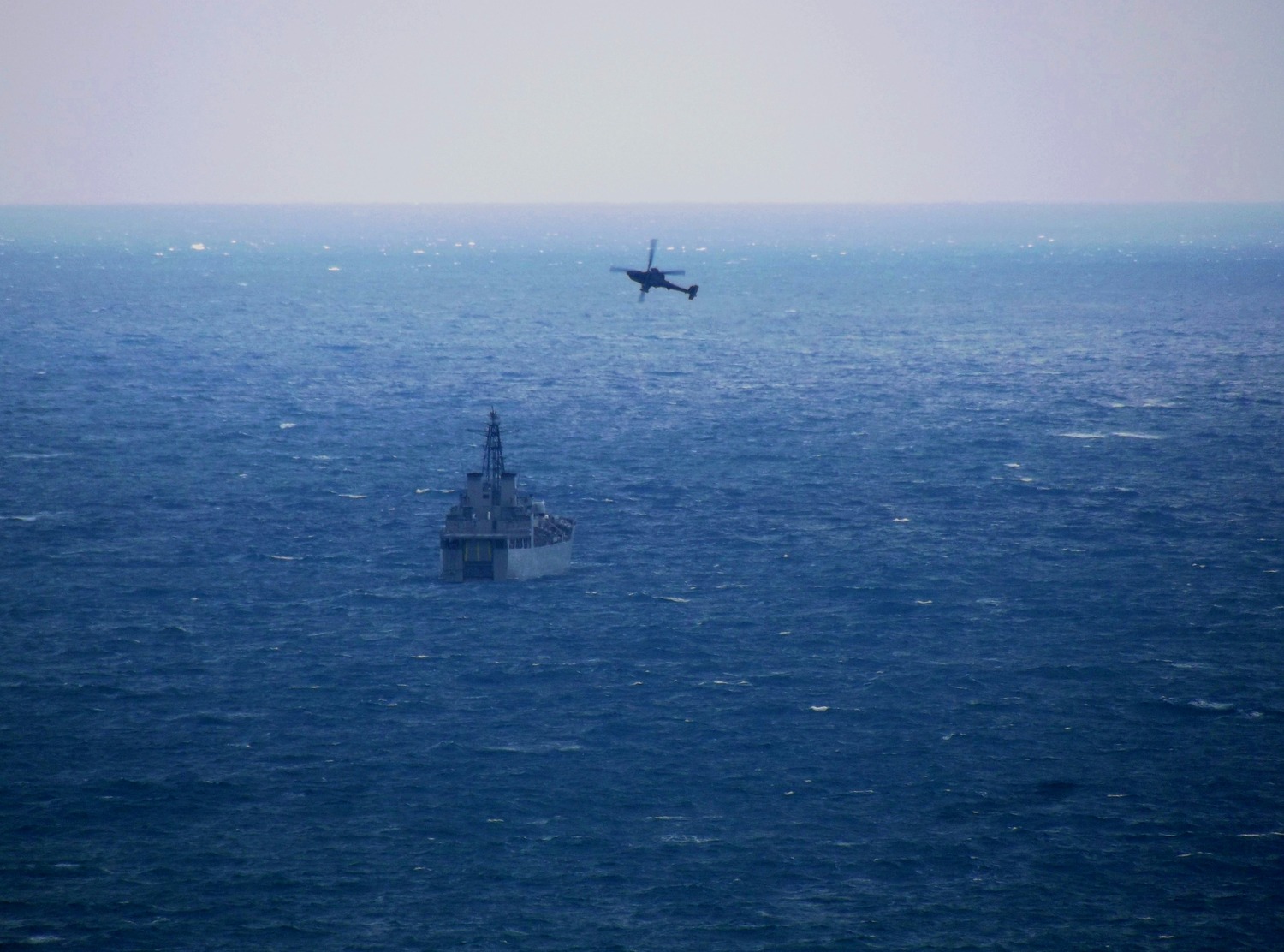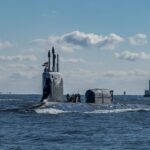Bungled Navy Warship Referred to Anti-Corruption Watchdog

Australia’s $45 billion Hunter-class frigate program faces fresh scrutiny after Senator David Shoebridge asked the National Anti-Corruption Commission (NACC) to examine how the Royal Australian Navy chose the British Type 26 design despite warnings it carried “extreme risk.” The referral follows a May Auditor-General report that found officials kept no minutes for two critical meetings, skipped a value-for-money study, and failed to update risk registers while costs climbed.
Shoebridge stresses he is not alleging bribes or personal gain. His concern is whether decision-makers sidelined proper process in a way that amounted to a breach of public trust. Under the NACC Act, the commission can compel testimony, seize records, and hold public hearings when systemic integrity is at stake. This referral, filed only two months after the commission opened, may become its first major test.
Risk-Laden Frigate Selection: Hunter-Class Procurement Under Fire
In 2016 the Defense Department shortlisted the paper-only Type 26 alongside two mature rivals even though internal assessors tagged it high risk on build complexity and through-life support. By mid-2018, without a documented value analysis, Defense recommended BAE Systems as preferred tenderer. Formal records explaining the about-face are missing, limiting later review. The report also highlights weak conflict-of-interest controls because two evaluation advisers had previously worked for BAE; again, no evidence of wrongdoing, but the absence of clear declarations erodes confidence.
Senator Shoebridge told reporters that secrecy, not kickbacks, is the real danger. He argues a culture of closed-door decision-making let a small group pick an untested design that Australia now struggles to fund and build. With the first hull still on the blocks, schedule slippage has reached five years, and independent estimates suggest inflation-adjusted costs may top AU$70 billion once support and weapons are included.
The NACC will first decide whether the referral meets its threshold. If it accepts the case, investigators can summon current and former officials, as well as BAE executives, to explain why key documents vanished and what risk advice ministers actually saw. There is no timeframe for that decision, but legal experts note that the commission’s “own-motion” powers allow it to act even without a formal referral once a matter appears serious.
Audit findings that triggered Shoebridge’s move:
- no minutes for the 2016 down-select decision;
- no record of a value-for-money study before the 2018 approval;
- missing updates to risk registers while design changes added displacement and power demands;
- incomplete conflict-of-interest declarations for technical advisers.
Hunter-Class Design Escalation and Stability Engineering Challenges
Design evolution is now the program’s central problem. BAE’s original proposal listed an 8,800-ton ship. Updated drawings show nearly 10,000 tons, raising concerns about stability in heavy seas. Extra top-weight from radars and electronic-warfare masts forces repeated hull recalculations, each time driving new steel shapes and delaying production. Naval architects have trimmed internal passageways, shifted ammunition stores, and rebalanced ballast to keep the metacentric height within safe limits.
Compromised Adaptability and Shrinking Upgrade Margins
Early sales material promoted flexible space for at-sea missile upgrades, yet spare margin for vertical launch cells has shrunk. Engineers warn that adding a strike-length module now would push the ship over weight limits or consume space reserved for boats and aviation gear. Those compromises undermine the original pitch that Hunters would remain adaptable over a forty-year life.
Workforce tension piles on risk. The Australian Manufacturing Workers’ Union (AMWU) says compensation at Osborne Naval Shipyard trails national heavy-engineering averages by 20 percent. Members voted in August for rolling stoppages unless BAE lifts base pay. Even short walk-outs can upset an already tight welding schedule because hull blocks must align to within millimeters when lifted. Management counters that higher wages require project stability first.
Osborne Yard Labour Disputes Threaten Frigate Timelines
Politicians sold the nine-frigate order as a guarantee of shipyard jobs through 2040. A surface-fleet review concluding this month could trim the class to six hulls, replacing the balance with lighter warships that slip into the water faster and cheaper. Recent examples include new offshore patrol vessels introduced to the Royal Australian Navy to fill lower-end roles. Cutting three frigates would cut future workload roughly 30 percent and may force layoffs once current blocks are complete.
Defense planners defend the Type 26 pedigree, noting that Britain and Canada selected the same basic hull. Yet overseas partners also battle overruns. The UK fleet shrank from thirteen ships to eight, and Canada’s Parliamentary Budget Officer estimates per-ship cost at C$5 billion. That international context weakens claims that Australia’s troubles are local.
BAE Systems rejects any suggestion the contest was skewed. In a market notice, it describes the evaluation as “rigorous” and points to software progress in the Adelaide shipyard’s land-based integration facility. Lockheed Martin, responsible for the Aegis combat system, says its team remains on schedule to deliver Baseline 10 code by 2027, though every hardware change forces interface updates.
Treasury warns that foreign-exchange exposure remains high because 60 percent of major hardware – gas turbines, sonar arrays, missile launchers – comes from sterling or dollar zones. A ten-cent slide in the Australian dollar can add hundreds of millions to the bill. Defense uses hedging to smooth peaks, but long programs outlast typical currency contracts.
Government advisers quietly weigh exit options. Canceling now would trigger break fees, strand a partly built hull, and leave a capability gap until an alternative arrives. Re-competing design could take years. Accepting fewer frigates but pairing them with smaller corvettes looks politically palatable: jobs remain in Adelaide while budgets recover.
Potential outcomes under study include:
- the NACC finds no process breach; work proceeds under tighter audit;
- the commission cites procedural failure but not corruption; later hulls may be cut or design pared back;
- a finding of serious misconduct triggers contract renegotiation or even termination.
For now sailors keep training on aging Anzac-class ships that will exceed thirty years by the time the first Hunter arrives. Command worries about gaps in anti-submarine coverage as regional navies field quieter subs and longer-range missiles. The Pacific outlook sharpened after recent Chinese drills around Taiwan and expanded basing in Cambodia.
Regional Security Pressures Sustain Royal Australian Navy’s Commitment
Washington wants Australia to contribute high-end escorts to allied task groups. Tokyo, facing its own destroyer modernization, notes that any Hunter delay complicates joint patrol planning in the South China Sea. Defense strategists therefore resist calls to scrap the project outright, preferring incremental correction.
Shoebridge insists transparency outweighs schedule pressure. He says taxpayers “cannot be told democracy slows delivery” when billions already slipped through without clarity. If the NACC confirms the culture issue he alleges, Parliament might legislate stricter record-keeping or open selection hearings for future big buys.
Industry lobbies counter that endless reviews hurt sovereign capability. The Australian Industry & Defense Network warns that losing momentum risks skilled workers migrating to energy projects. The organization argues that even a flawed local build preserves skills better than off-the-shelf imports.
Defense Minister Richard Marles declines comment while the NACC weighs jurisdiction. Privately, senior staff indicate the department will cooperate fully but will seek cabinet protection for sensitive foreign-government data.
As the year closes, Osborne welders see changing drawings, union flyers, and price bulletins tacked on the same noticeboard. Their work proceeds block by block, each steel panel recording the cost of earlier decisions now under investigation. Whether the NACC exposes wrongdoing or merely highlights poor governance, the referral already shapes future defense contracting by showing that missing paperwork can trigger a national inquiry.
Hunter-Class Delays Amplify Workforce Retention and Budget Pressure in Adelaide
The immediate technical tasks – fitting bigger power converters, trimming funnels, reinforcing boat bays – continue. Engineers pass new weight tables to draftsmen who send revised digital twins back to the yard. Every revision carries cost, yet halting revamps mid-stream could leave the ship unable to meet combat loads. Project leaders must therefore balance stability margins against spending discipline in real time.
Crews slated for the first Hunter conduct bridge simulations on shore. They train radar watch routines and helicopter recovery in a virtual cockpit while hull sections grow nearby. Morale holds steady, officers say, because sailors focus on tactics, not politics. Still, many admit they read each audit line; their future ship’s reputation begins long before sea trials.
Procurement Oversight and AUKUS Workforce Pressure Hit Adelaide Naval Shipbuilding
Observers make two broad lessons. First, high-price bespoke builds demand transparent gate reviews with written rationales. Second, strategic patience is valuable, but unchecked optimism inflates risk. The referral to the NACC crystallizes both points by linking paperwork gaps to strategic costs.
Key program dates stand out: the initial competitive evaluation in 2015, the shortlist in April 2016, government approval in June 2018, first steel cut in December 2022, and now a corruption probe in 2023. Each milestone adds context the commission will need. Shoebridge wants those links made public; Defense prefers classified annexes. The coming months will decide whose view prevails.
Senate committee hearings will resume once the surface-fleet review lands. Questions will center on whether Canberra can still redesign without full cancellation. Post-audit corrective-action logs show Defense hired an external consultancy to strengthen documentation and restart monthly risk-board meetings. Critics call that too little, too late; supporters call it overdue realism.
The debate lands during a tight labour market. Australia’s submarine pact with the United States and United Kingdom – AUKUS – will draw pipefitters and electricians to port projects in Western Australia. Keeping enough trades in Adelaide hinges on confidence that Hunters remain a steady pipeline. Uncertainty, not pay alone, drives churn.
Financial analysts calculate that each one-year slip adds roughly AU$2 billion in inflation and overhead. Their spreadsheets feed into cabinet budget updates, turning design weight into fiscal weight. Those numbers shape the politics more than sonar range or radar aperture.
If the NACC clears the project, momentum could return. If it criticises the process, ministers might accept design concessions, such as shedding future missile growth to protect stability, or moving construction of later hulls to a second yard to de-risk timing. Either path involves trade-offs that put headlines against hull numbers.
NACC Inquiry Spurs Naval Overhaul – Update March 2025
The NACC acted on the referral on 14 June 2024 by launching an “own-motion” inquiry that now carries file number 23-104. Investigators have interviewed thirty-seven witnesses, seized email archives from the Capability Acquisition and Sustainment Group, and taken sworn testimony from two former BAE consultants who sat on early advisory panels. The inquiry remains live as of its 19 March 2025 weekly update, with no interim findings released.
Government policy shifted while the probe advanced. On 20 February 2024 Defense Minister Marles rolled out the Future Navy plan that caps Hunter production at six ships and introduces eleven general-purpose frigates and six large optionally crewed vessels. The decision followed months of modelling that showed a mixed fleet could field missile magazines sooner while holding spending inside a ten-year envelope. Similar regional initiatives, such as Japan’s transfer of Abukuma-class destroyers, also aim to strengthen allied naval capabilities while managing costs.
Cost projections continue to rise. A March 2025 German maritime journal placed the average per-ship price at about €4 billion once support is included, roughly double the 2018 public figure. Defense acknowledged higher “estimate sensitivity” but has not disputed the number.
Rising Frigate Costs and Labour Disputes Stall Osborne Yard Production
More than 400 AMWU members walked off Osborne yard for forty-eight hours on 22 May 2025 after rejecting a staggered 12 percent pay offer. The stoppage paused block alignment on the second hull and pushed its launch window to early 2035. Fair Work Australia now mediates fortnightly bargaining sessions.
Design churn slowed but did not cease. Lockheed Martin reported a stable combat-system baseline in December 2024, yet new electronic-warfare antennas promised to Parliament last November forced a lighter funnel cap to restore weight margin. Naval architects claim reserve buoyancy is positive but tight.
Shoebridge signals he will press for public hearings once the NACC finishes evidence gathering. He argues that transparency, not timetables, salvages trust. Defense officials counter that prolonged exposure risks talent flight and vendor penalties. Political resolution may depend on whether the commission finds a process breach large enough to demand structural change.
REFERENCE SOURCES
- https://www.abc.net.au/news/analysis-australia-to-get-expensive-anti-submarine-warships/103496444
- https://www.afr.com/politics/federal/bungled-navy-warship-referred-to-anti-corruption-watchdog-20230903-p5e1l9
- https://www.anao.gov.au/work/performance-audit/department-defences-procurement-hunter-class-frigates
- https://www.nacc.gov.au/news-and-media/weekly-update-work-commission-19-march-2025
- https://www.abc.net.au/news/2024-02-20/what-changes-are-being-made-to-surface-naval-fleet/103490304
- https://marineforum.online/en/four-billion-for-a-frigate/
- https://www.adelaidenow.com.au/news/south-australia/union-workers-at-bae-systems-australia-walking-off-job-over-demand-for-30-per-cent-wage-rise/news-story/2ed879d196d153f371264e770943d1b1
- https://www.defenceconnect.com.au/naval/15946-progress-continues-on-hunter-class-frigate-build-with-expanded-supplier-partnerships


